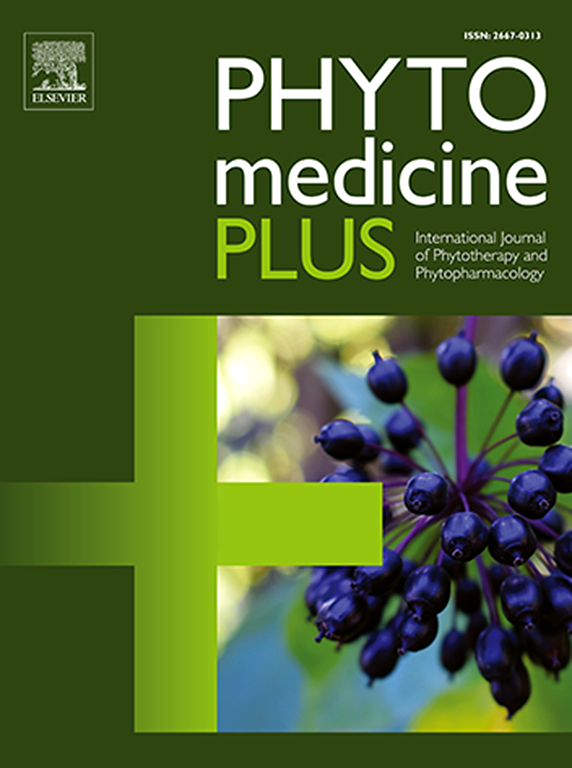Phytotherapeutic agents for insomnia: A scoping review on the mechanistic insights and evidence from animal models
Q3 Pharmacology, Toxicology and Pharmaceutics
引用次数: 0
Abstract
Background
Sleep disorders particularly, insomnia, are a worldwide issue with serious implications for public health and individual well-being. While traditional and psychological therapies are already accessible, there is growing interest in exploring complementary plant-based treatments for insomnia due to their potential efficacy and fewer side effects. This narrative review investigates medicinal plants with sleep enhancing properties, focusing on species from various countries and those also found in the Philippines.
Methods
Journal articles that evaluated sleep duration, rapid eye movement, non-rapid eye movement sleep, sleep latency, number of sleep, sleep quality, wake times, and sedative-hypnotic effects of plants in vivo were retrieved from electronic databases such as Google Scholar, PubMed, Elsevier, SpringerLink, EBSCO, and ScienceDirect.
Results
A total of 39 plants with sleep-enhancing activities were reviewed and identified. Their bioactive components and pharmacological mechanisms were presented. Plants such as Lactuca sativa, Nelumbo nucifera, and Ziziphus jujuba demonstrated consistent efficacy in improving sleep quality through interactions with the GABAergic system, as confirmed by various studies
Conclusion
Many therapeutic plants exhibit promising potential to manage insomnia and enhance sleep. However, most studies are still preliminary, with the molecular mechanisms behind their sleep-enhancing effects remaining inconclusive.

植物治疗失眠症:对动物模型的机制见解和证据的范围审查
睡眠障碍,特别是失眠,是一个全球性的问题,对公共卫生和个人福祉有着严重的影响。虽然传统和心理疗法已经可以获得,但由于其潜在的疗效和较少的副作用,人们对探索以植物为基础的失眠补充疗法的兴趣越来越大。这篇叙述性综述调查了具有增强睡眠特性的药用植物,重点是来自不同国家的物种以及在菲律宾发现的物种。方法从谷歌Scholar、PubMed、Elsevier、SpringerLink、EBSCO和ScienceDirect等电子数据库中检索评估植物体内睡眠时间、快速眼动睡眠、非快速眼动睡眠、睡眠潜伏期、睡眠次数、睡眠质量、醒来次数和镇静催眠作用的期刊文章。结果共鉴定出39种具有睡眠促进作用的植物。介绍了它们的生物活性成分和药理机制。许多研究证实,植物如莴苣、莲藕和酸枣通过与gaba能系统的相互作用,在改善睡眠质量方面具有一致的功效。结论许多治疗性植物在控制失眠和改善睡眠方面表现出良好的潜力。然而,大多数研究仍处于初步阶段,它们增强睡眠作用背后的分子机制仍未确定。
本文章由计算机程序翻译,如有差异,请以英文原文为准。
求助全文
约1分钟内获得全文
求助全文
来源期刊

Phytomedicine Plus
Medicine-Complementary and Alternative Medicine
CiteScore
3.70
自引率
0.00%
发文量
178
审稿时长
81 days
期刊介绍:
 求助内容:
求助内容: 应助结果提醒方式:
应助结果提醒方式:


